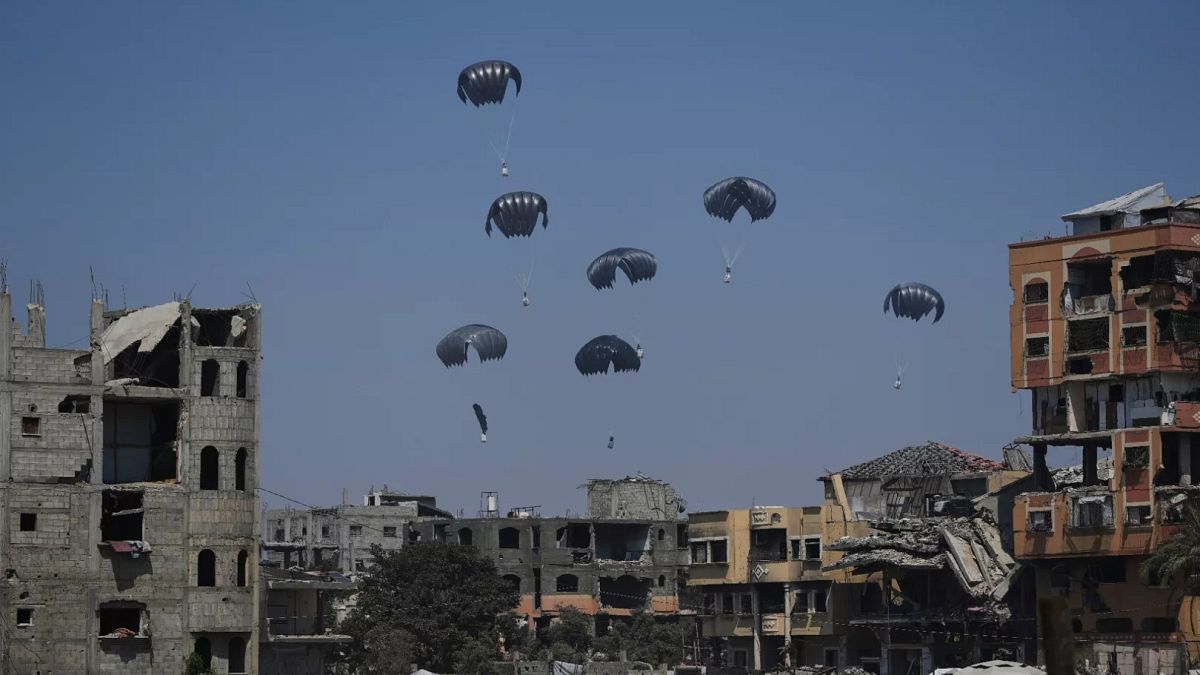

In a world often fraught with challenges, positive strides are being made in the Gaza Strip as efforts to provide humanitarian aid continue amidst ongoing conflicts. Recent developments paint a picture of a region where hope and challenge coexist in equal measure, emphasizing the importance of sustained and careful international attention.
In a display of regional cooperation, Jordan has announced multiple airdrops of essential supplies over the skies of Gaza. This initiative not only highlights Jordan’s commitment to humanitarian aid but also underscores the collaborative spirit of the United Arab Emirates, which joined one of the operations. This collective action speaks to a shared regional understanding of the need to address the worsening humanitarian situation in Gaza.
Amid these efforts, challenges persist. The recent interception of the “Handala”, a ship organized by the Freedom Flotilla Coalition, marks the second such incident in recent months where attempts to deliver humanitarian aid by sea were thwarted. This event adds complexity to the already tense atmosphere, reflecting the delicate balance of providing aid while maintaining security.
In response to the escalating humanitarian concerns, Israel has announced plans to establish humanitarian corridors in Gaza. This approach intends to facilitate the delivery of aid while maintaining combat operations against Hamas. The creation of these corridors aims to address the pressing warnings of famine, offering a glimmer of hope for relief amid a challenging environment.
Despite these efforts, the human toll in Gaza continues to rise. Reports from hospitals indicate that at least 25 people have perished under circumstances involving Israeli strikes and gunfire. Many of these casualties occurred as individuals awaited food supply near the Zikim crossing, making evident the human cost of conflict and the urgent need for further humanitarian interventions.
Amid this backdrop, the World Health Organization (WHO) has sounded an alarm, emphasizing that Gaza is on a “dangerous trajectory” concerning malnutrition. This call to action comes as Israel announces temporary pauses in military activities aimed at allowing humanitarian aid to flow more freely into the territory. These pauses, however, are received with cautious optimism by the local population, as the aid allowed is described as “minimal.”
Palestinians in Gaza remain wary, navigating the delicate balance between hope and skepticism. The introduction of daily military pauses, intended to increase the flow of aid, reflects an acknowledgment of the severe humanitarian crisis that has resulted from the restrictive blockade. Humanitarian organizations and the United Nations attribute this crisis to the limitation of aid, underscoring the dire consequences of such constraints.
The World Food Programme reports that an alarming number of women and children in Gaza require immediate intervention for malnutrition, with approximately one in three residents struggling with food scarcity. This stark reality serves as a call to action for both local and international stakeholders to continue their efforts towards ensuring the well-being of Gaza’s population.
As the situation unfolds, the need for sustained, concentrated efforts to address the humanitarian needs in Gaza remains clear. The cooperation between nations, the introduction of humanitarian corridors, and the concern of global health organizations collectively stress the importance of peace and assistance in times of conflict. Through mindful, coordinated efforts, there is hope that the ongoing challenges in Gaza can be met with compassion and resolve.
Source: {link}
